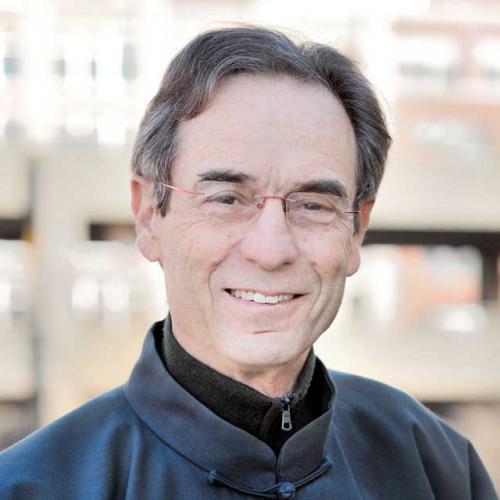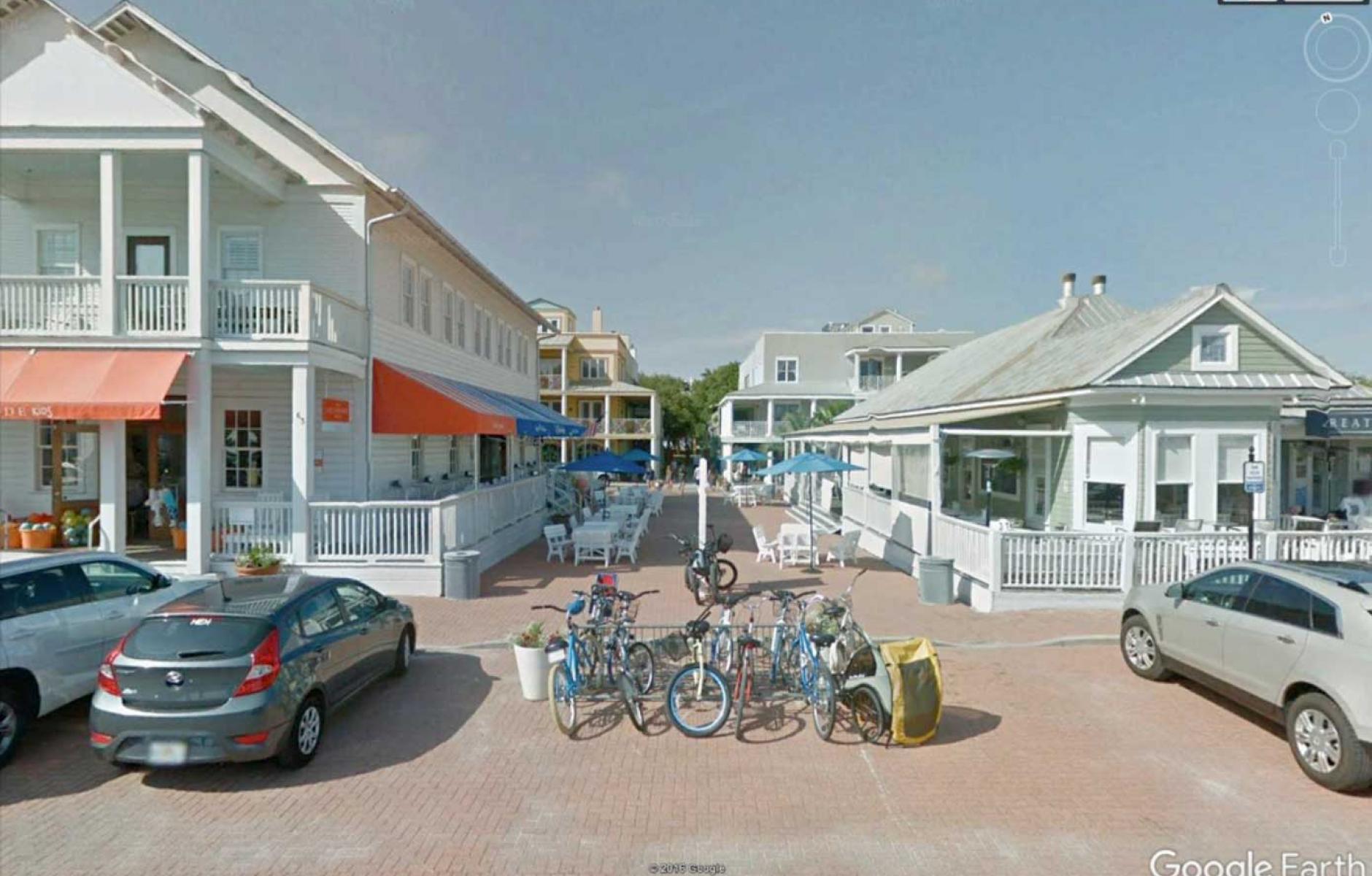
The Thirty Years’ War: New Urbanism and the Academy
To most American architects and to almost all schools of architecture, New Urbanism is a bizarre, little known, sub-culture that they look upon with attitudes that range from indifference, to dismissiveness, to active hostility. Many in CNU happily return the favor and see the digital razzle dazzle that plasters the walls of most schools of architecture not only as meaningless, but as a virulent menace to urban civilization, poisoning the minds of the young.
This is neither a new story nor a big mystery. New Urbanists look back at certain moments of urban history with admiration and longing that is hard not to call nostalgia, and for many New Urbanists that enthusiasm extends to the architecture of olden times. For people trained and acculturated in the normal ways of architects, looking back to look forward is an apostasy against the very bedrock of a belief system rooted in modernism as perpetual revolution. For them, the CNU is Lot’s wife incarnate.
One can expend a great deal of philosophical hot air on what comes down to affinities for old-fashioned versus new-fangled and not really get anywhere.
It is much too easy to say, as many CNU’ers have for a long time, that they, that phalanx of others marching with linked arms are simply wrong in their fetishizing of autonomous object buildings at the expense of the city, and perverted in their promiscuous embrace of formal invention, the weirder the better.
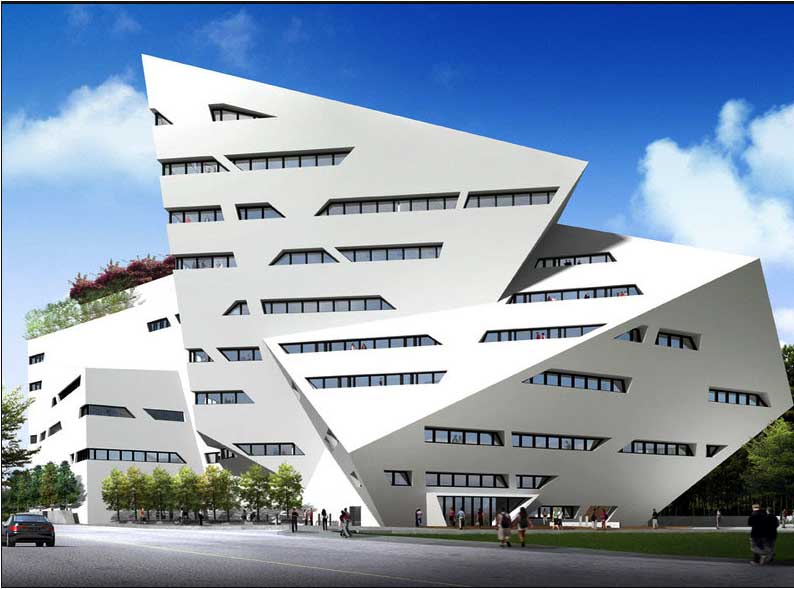
I want to devote my few minutes to questions never asked that do not have obvious answers. Those questions are: What if those linked-arm architects and educators, goose-stepping to the drumbeat eternal novelty are right? What if they are even a little right and we are a little wrong? Is there something New Urbanists have been missing all these years that has helped to relegate us to the far suburbs of architectural discourse? Just because we think people are crazy, does not mean that they are wrong or always wrong.
The vast distance between what architects are taught to think is important and what New Urbanists think is important has survived radical climate change in the universities in which architecture schools reside. The changes are huge. Remember Cartesian rationalism and logical positivism? Do you remember when social science dressed as science; when psychology was behaviorism; when, for a while, statistics (at least at Berkeley) were as basic to the architectural curriculum as statics, because architecture was social science plus engineering; and engineering was not today’s Calatravavavoom stuff; beams and columns were shaped like moment diagrams—the right way, and they better show.
Unfortunately, rational Cartesian solids scattered on the tabula rasa of the graph paper city were not a big hit. Other stuff came along: Complexity and Contradiction; Heidigerrian voodoo; Gaston Bachelard and The Psychoanlysis of Fire; then weirder stuff of all sorts.
Architecture was in the bus with the rest of the university on the great journey from modernism to post-modernism. From absolutism to absolute relativism; from certainty about certainty to disbelief in belief. Architectural academics went on the long bus ride with all their academic brethren with hardly a sideways glance out the window of the bus at the city. The bus drivers came from the English Department or else they were French. There were a few unruly passengers like Berkeley philosopher John Searle who said, memorably, that bus driver Jacque Derrida was the sort of person who gave bullshit a bad name, but mostly the passengers were well-behaved on the ride, happily singing 100 Bottles of Beer on the Wall, although many of us had no idea where the bus was headed or why, or even what the bus drivers were all about.
One thing didn’t change in the new landscape. Object fetishism, the city be damned, is the common core shared by modernist Cartesian rationalism and the post-modern architecture of personal narrative. It is what links the exquisitely detailed steel boxes of yore to the blobs and the shards of today: two kinds of rigor that that both face solipsisticly inward. As it turned out, the preoccupation with the idealized objecthood of modern architecture has outlasted the long-spent ideas and attitudes that once gave modern architecture its moral and intellectual force and legitimacy.
The (so far) the unbreachable chasm between New Urbanism and what now passes for architectural culture consists of opposite conceptions of the relationships of place, time and objects–not small matters. For architects, the culture of objects, their history and the discipline of making them are infinitely rich subjects. For urbanists, objects, especially buildings, have meaning only as the constituent elements of places. This is not just a matter of I’m more interested in this and you’re more interested in that—like say botany and astronomy. Botanists and astronomers have nothing against one another—unless they happen to be competing for faculty resources or parking. By contrast, there is real animus between the object people and the place people. Each subject has its own historiography, one focused on canonical buildings, the other on the history of the city. They not only see each other as a threat to what they hold most dear, they regard each other as uncouth, uncultured philistines.
The purpose of this discussion is to probe for a way out of this apparently hopeless impasse. There is no point in arguing or explaining the righteousness of the CNU position to new urbanists. I want instead to force feed a dose of the righteousness in the anti-CNU position, to claim that as CNU has evolved, perhaps devolved, over twenty-five years; it has narrowed, and ossified into a sometimes dreary orthodoxy that betrays the subtlety, complexity and richness of its original premise.
There was a stern warning of early-onset ossification a long time ago that went largely unheeded. It was delivered with the full might of Churchillian rhetorical flourish by New Urbanism’s most potent God-father, Colin Rowe, in a small conference at Seaside a few weeks before his death in 1999. I wrote a chapter in Global City Blues about this event, but I have been thinking more about its significance recently.
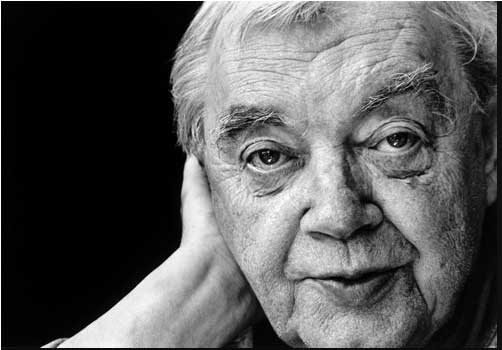
Most of the people at that memorable conference attributed Colin Rowe’s cruelty to our most esteemed colleagues, either to the misery of a dying man, or perhaps to the joyous freedom he felt to be released at last from the bondage of civility. What he really felt, I believe, was a sense of betrayal as he looked at some latest work of CNU’s leaders. He saw his own influence over-simplified and trivialized and he was deeply troubled.
The whole thrust of his Cornell Urban Design Studio, of most of his own writing, and the work and writing of the people he most influenced, is the endlessly interesting, eternally complex mediations between architecture and the city, and between history and the imperatives of an ever-changing present. He considered these mediations one of the highest manifestations of human intelligence, and never a simple matter reducible to formulae and standard practices.
To make sense of Colin Rowe’s reflexive hostility to much of what he saw at Seaside on that memorable day, I will cite two buildings and a book. The point of these three examples is that they represent the dialectic or the pas de deux of architecture and the city at its best moments. Colin Rowe was fond of the phrase “healthy intercourse” to describe these interactions, and he had in mind something more complex, varied and interesting than the basic missionary position.
New Urbanism does provide a place, but a limited and condescending place, for the object obsessions and formal preoccupations of architects. It is the idea of fabric and monument. In this conception, the normative buildings of the city are an anonymous tapestry that defines and frames a few special sites for buildings of special importance–the monuments.
This conception of fabric and monument has a pedigree that includes the writings of Leon Krier and Aldo Rossi, and their precursors. It is embedded in the Charter of the New Urbanism and it is as far as most New Urbanists have considered the subject. New Urbanists (Andres Duany is one) often point to Frank Gehry’s iconic Guggenheim Museum in Bilboa and its relationship to the historic fabric that frames it, as an example of how welcoming a New Urbanist conception of the city is to eccentric and monumental modern architecture.
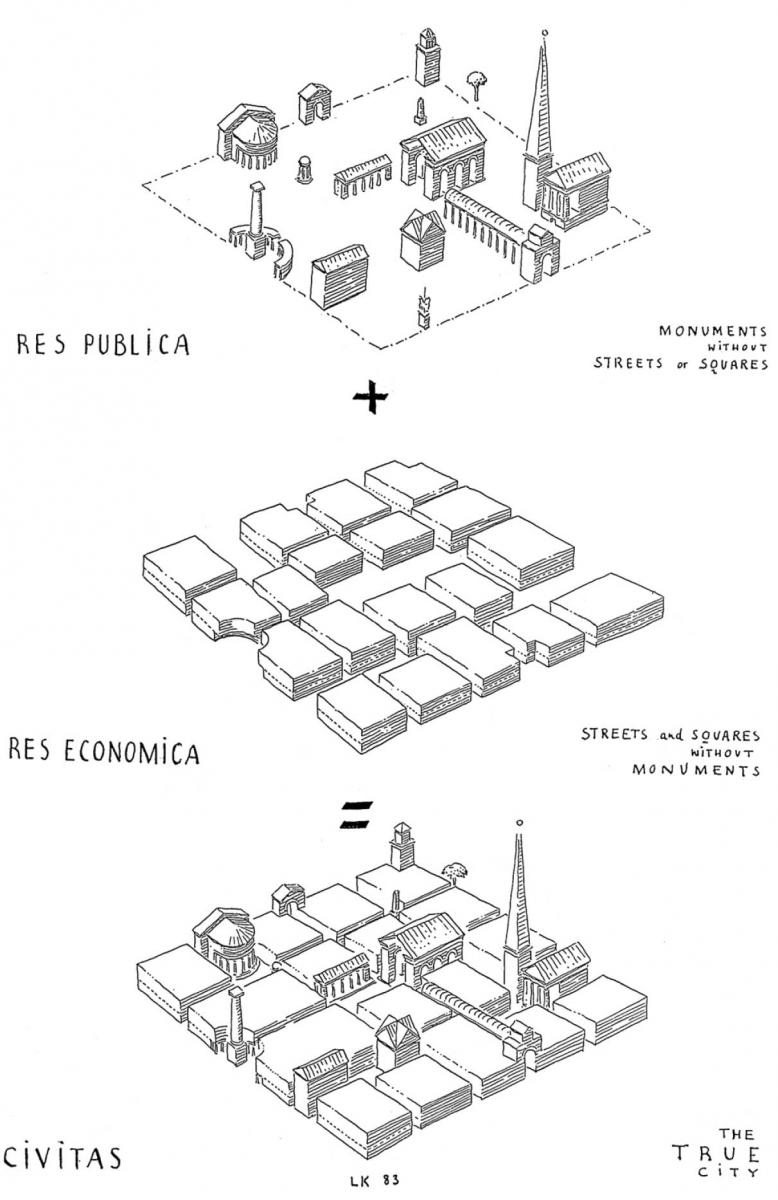
I want to argue (blasphemously) that the fabric/monument conceit is simplistic, condescending to architects, and not a very useful model for the various interactions between architecture and city form. A big problem with the New Urbanist fabric/monument idea is the attitude toward city fabric as something normative, ordinary and requiring a lesser architectural intelligence that the creation of monuments—a cake mix theory of the city: take a figure/ground with continuous street walls, just add bio-filtered stormwater and mix—e voila: New Urbanism. In fact, as Colin Rowe knew well, the reconciliation of complex building programs with the spatial demands of the city and the shaping of its public spaces is an architectural task of the highest order.
As the New Urbanist story goes, exceptional programs deserve exceptional sites and jazzy buildings like the Bilboa Guggenheim belong dotted around the city, terminating axis, occupying honorific park sites, and so on. The city is not that simple, however, and not that static. Only now and then will there be congruence between isolated honorific sites and important building programs. Very often, important buildings occupy ordinary sites, and ordinary buildings occupy important sites. In a city master-planned and vigilantly administered by God, that might not be true, but so far God has received no such commission, thank God. The city is complex and messy, always changing, never divine, always pragmatic, always human. The highest calling for an architect should be to master the complex, and the messy, to summon all of his skills to resolve with elegance the contradictory demands placed upon him. Mastery of the contradictory is the measure of humanity.
Consider what happens when the messy and the complex takes the form of a special and important building program, like a museum or a church, landing on an ordinary site, a typical lot embedded in the fabric of the city. Such a circumstance is not an anomaly or a mistake. Given the normal dynamics of institutions and real estate transactions, it is bound to happen with great frequency. An architect has ample room for failure with a commission like this. If the work is too deferential to the city context, it buries the special building in its fabric and fails to give the special building the symbolic importance and recognition it needs. If the work is so eccentric that it disrupts the city fabric, it brings discredit on the institution it is attempting to honor, because eccentric buildings on ordinary sites look silly. Like someone in party dress in the daily workplace.
There is, however, a whole category of masterworks which one can call Buildings of the Third Kind. In these works, architects give expression and honor to special places, while simultaneously reinforcing the weave of city fabric that defines its streets and public places. Rome with its thousands of churches, palazzos and institutions woven through the city has scores of Buildings of the Third Kind, none more masterful that those of Francesco Borromini. Borromini was eclipsed for much of his career by the flashier and more charismatic Gian Lorenzo Bernini, and his oeuvre are mostly second tier commissions—smallish buildings on undistinguished city sites. His greatness is built on surmounting the contradictory demands of these commissions—simultaneous city fabric and monument. Second tier commissions produced some of the most complex and subtle works of the Western canon: San Carlino alla Quattro Fontana, Sant’Ivo, Collegio Pamphili.
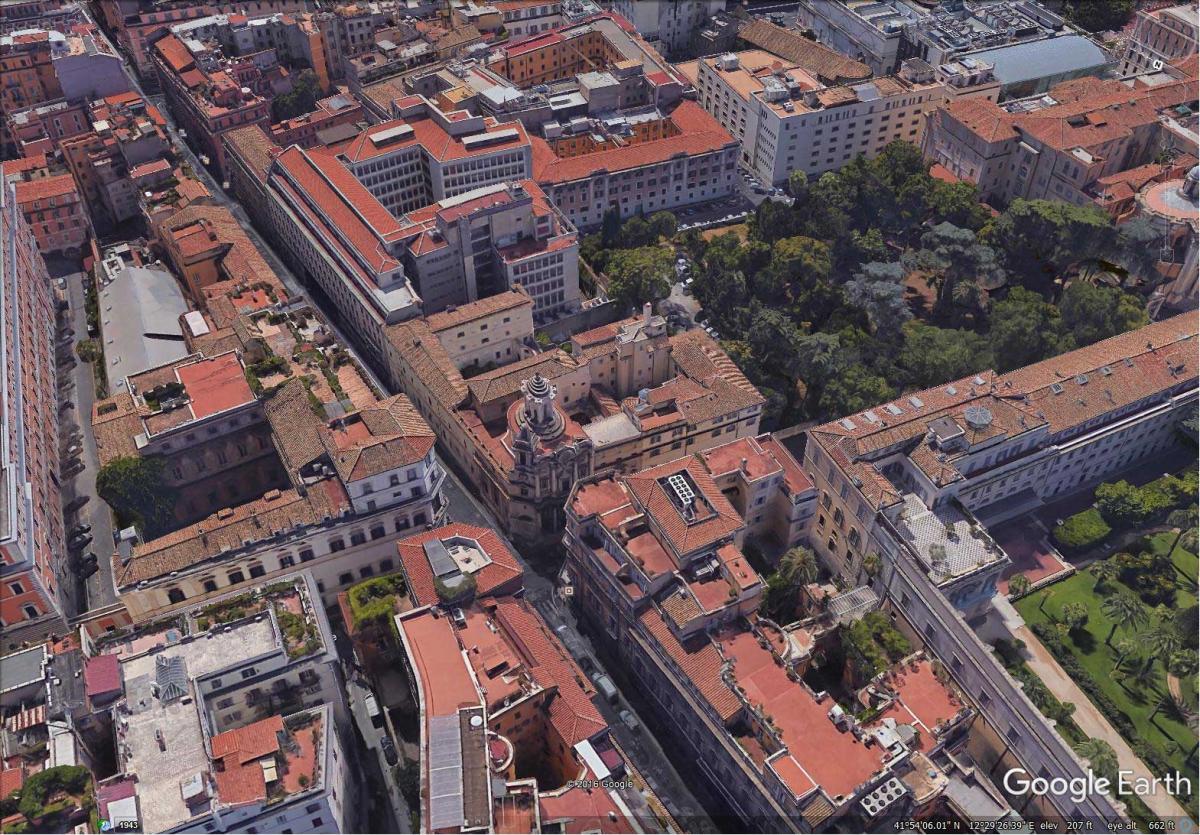
Never have the ordinary and the extraordinary been reconciled with more sublime elegance than at San Carlino all Quattro Fontana. Its interior is nothing less than a three-dimensional cosmological map, depicting in its intricate geometries and its filtration of light, the relationship of heaven and earth. But the sanctuary of San Carlino sits on an unremarkable street corner on the consistent street frontage of via Quirinale, leading to the magnificence of Palazzo Quirinale and Piazza Quirinale a couple of blocks up the street. Mediating between the glories of the interior and the important but subservient role of the exterior is a subtly undulating wall, true to the demands of both inside and out. In this most complex of mediations, Borromini leaves the enduring lesson of how to be both a humble city builder and an architect of thundering power.
Less remotely in time and place, San Francisco’s great neoclassicist of the early 20th century, Arthur Brown managed a similar feat with his monumental synagogue, Temple Emanu-el. The program is larger and more complicated than San Carlino, but it too is on an ordinary corner site with a sanctuary, a courtyard and many more ancillary spaces than Borromini had to contend with. Arthur Brown’s sanctuary is a divine geometric construct, based on the domes of Sinan in Istanbul. The dome is a monumental civic presence in the City skyline. The ancillary functions are shaped into a respectful street wall, pierced on one side by a noble arch and monumental stair, on the other by a transparent arcade, both leading to a beautiful forecourt to the sanctuary.
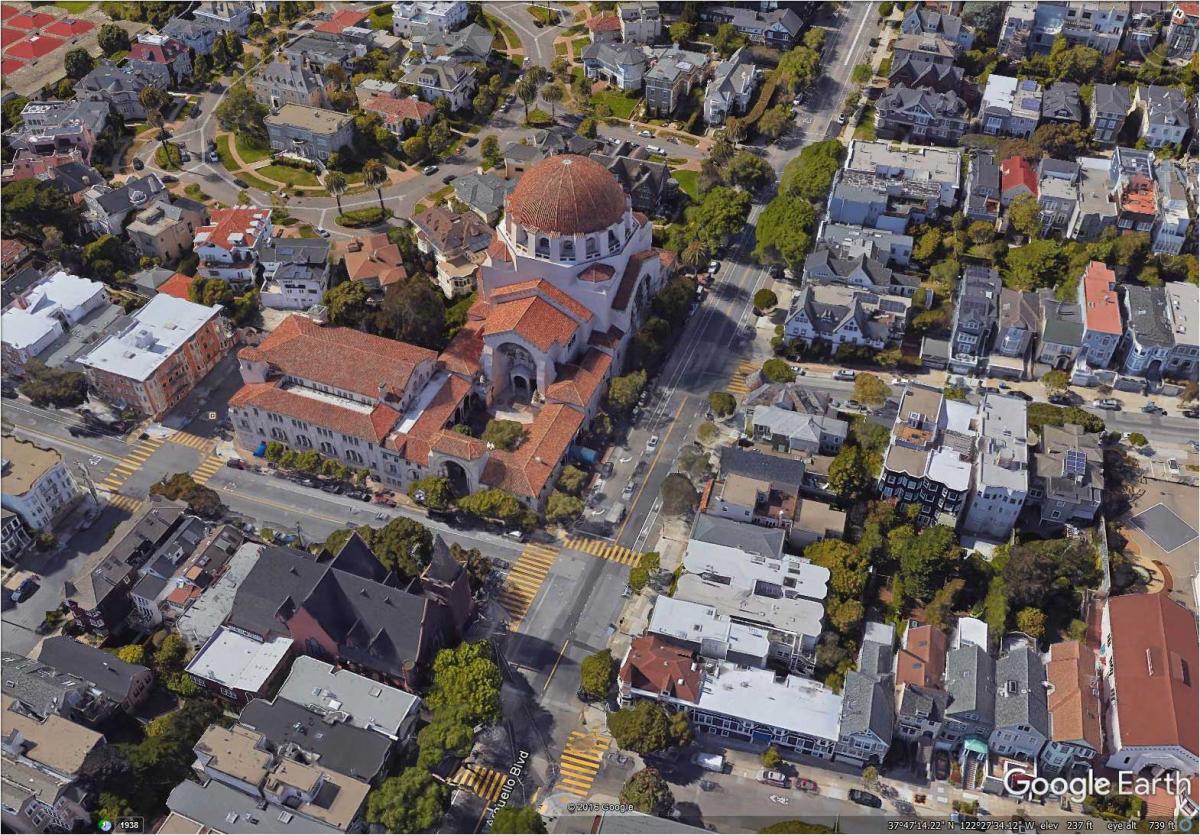
The most clear and systematic explication of Colin Rowe’s conception of architecture and the city in “healthy intercourse, ” is Michael Dennis great book Court and Garden which should be required reading for all who lay claim to being New Urbanists and absolutely mandatory for students of architecture. It is tragic that this great didactic text is mostly a dust collector in university libraries these days. Dennis’s book lays bare the secrets of generations of Parisian architects who brought about the most virtuosic mediations between the traditional city as the grand setting for civic life and the emerging complexity of building programs with specialized internal demands. The French Hotel, or large private aristocratic house and its shaping of the splendors of the public realm of Paris from the 17th century to the 19th is a textbook for the modern city.
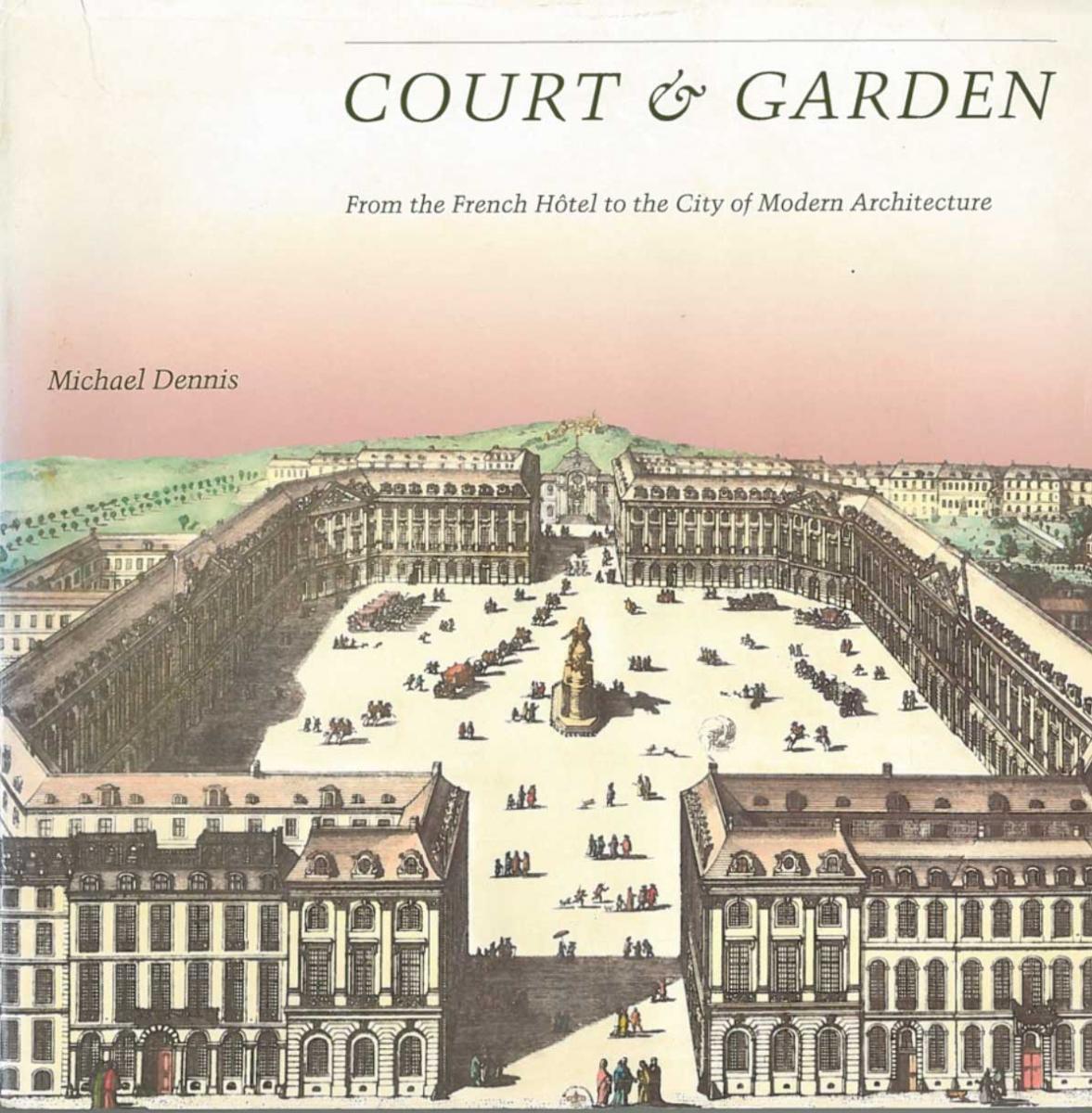
Colin Rowe had only one opportunity for a comprehensive review of the works of New Urbanists at Seaside. He thought his legacy was debased by what he saw as simplistic and cartoonish. Figures and grounds, fabrics and monuments—okay for a start—but not what he had devoted his life to. He found them as inadequate, as strangling of aspiration as all other reductive formulae. Whatever happened to Borromini, and to Arthur Brown, to buildings of the third kind and to the beautiful fabric of Paris?
Note: This article is an edited version of a presentation that was given at CNU 25 in Seattle.




